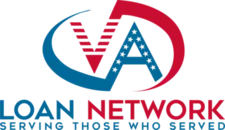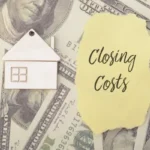
VA Loan Down Payment Requirements
What are VA Loans?
VA loans are mortgage loans backed by the U.S. Department of Veterans Affairs, designed to assist eligible borrowers in purchasing homes. The primary objective of the VA loan program is to promote homeownership among those who have served in the military by providing favorable lending terms.
Key Features of VA Loans
- No Down Payment: One of the most significant benefits of VA loans is that they typically allow borrowers to finance 100% of the home’s purchase price without the need for a down payment.
- No Private Mortgage Insurance (PMI): Unlike conventional loans, VA loans do not require buyers to pay for PMI, which can lead to significant savings on monthly payments.
- Lower Interest Rates: VA loans usually feature competitive interest rates compared to other loan types, helping reduce overall loan costs.
- VA Funding Fee: Although VA loans do come with a funding fee (generally between 2.3% and 3.6% of the loan amount), it can be rolled into the mortgage. Some veterans may qualify for an exemption from this fee.
- Flexible Credit Requirements: VA loans often have flexible credit guidelines, allowing borrowers with lower credit scores to qualify.
- Streamlined Refinancing Options: The VA’s Interest Rate Reduction Refinance Loan (IRRRL) program offers a simplified refinancing option for existing VA borrowers, making it easier to secure better loan terms.
VA Loan Down Payment Requirements
Zero Down Payment Feature
The most enticing aspect of VA loans is their no down payment requirement. This eliminates a significant barrier for many potential homebuyers and allows veterans and active-duty service members to purchase homes without depleting their savings or utilizing substantial upfront funds typically needed for a down payment in traditional loans.
How Down Payment Works in VA Loans
- 100% Financing: Veterans can obtain a loan for the entire purchase price of the home, enabling them to conserve funds for other costs associated with homeownership, such as closing costs and moving expenses.
- Loan Limits: The VA does not impose a maximum loan amount; rather, it limits the amount it will guarantee, which varies by county and is based on median home prices. Therefore, veterans can still access sizeable financing without a down payment.
- Entitlement Restoration: If a borrower sells the home and pays off the VA mortgage loan, their VA entitlement can be restored and reused, allowing for future home purchases without a down payment or with a lower down payment for higher-priced homes.
Upfront Costs Associated with VA Loans
VA Funding Fee:
The VA funding fee is a one-time charge that helps finance the VA loan program. This fee can range from 2.3% to 3.6% of the loan amount, depending on factors such as:
- Whether it’s the borrower’s first or subsequent use of the VA loan benefit.
- The size of the down payment (if any) made on the home.
- The type of service (active duty vs. reserve).
Importantly, eligible veterans with service-related disabilities may be exempt from this fee. The funding fee can be rolled into the loan amount, which reduces the need for cash upfront but increases the overall loan balance.
Closing Costs:
Closing costs on a VA loan can range from 1% to 5% of the loan amount and typically include several different fees. Common items that contribute to closing costs are:
- Loan Origination Fee: Charged by the lender for processing the loan application, typically around 1% of the loan amount.
- Appraisal Fee: Required to confirm the home’s value, generally ranging from $300 to $600, depending on the property’s complexity and location.
- Credit Report Fee: A fee for obtaining the borrower’s credit report, usually around $30 to $50.
- Title Insurance: Protection against potential issues with the property title, which can vary depending on the loan amount and local laws.
- Inspection Fees: Potential costs for professional home inspections to identify any issues before purchase.
- Recording Fees: Charged by local government offices for recording the new mortgage and property deed, often ranging from $50 to $150.
- Prepaid Expenses: These may include property taxes, homeowners insurance premiums, and sometimes additional reserves for future payments.
Prepaid Taxes and Insurance:
VA lenders often require borrowers to prepay certain home-related costs at closing (e.g., property taxes and homeowners insurance). This upfront payment ensures that these costs are covered when they are due and can vary based on the local tax rates and insurance premiums.
Other Potential Costs:
- Homeowners Association (HOA) Fees: If the property is within an HOA, there may be upfront fees associated with joining the association or other initial costs. This will depend on the community and specific property.
- Moving Costs: While not directly related to the loan itself, buyers should factor in the costs of moving, which can add to the overall financial commitment.
- Home Warranty: While optional, purchasing a home warranty can provide added peace of mind against unexpected repairs. The cost varies, but it is typically a few hundred dollars for annual coverage.
Budgeting for Upfront Costs
Understanding upfront costs associated with VA loans is crucial for planning and budgeting for homeownership. While the absence of a down payment can significantly ease entering the housing market, the overall costs at closing can add up.
Tips for Managing Upfront Costs:
- Estimate Closing Costs: Get an estimate of your closing costs early in the home-buying process. Many lenders provide a Good Faith Estimate (GFE) that outlines potential costs you’ll incur.
- Shop Around for Services: Comparison shop for services like homeowners insurance or title insurance to ensure you’re getting the best rates.
- Negotiate: In some cases, certain closing costs can be negotiated with the seller, who can contribute toward closing costs as part of the purchase agreement.
- Review Loan Estimates: When you receive a Loan Estimate from your lender, review it carefully to understand all fees and costs associated with the loan.
- Consider Assistance Programs: Investigate state and local assistance programs that may provide upfront cost support, including closing cost assistance or grants for veterans.
When Do You Need a Down Payment for a VA Loan?
While one of the main advantages of VA loans is the no down payment requirement, there are some scenarios where a down payment may be necessary or beneficial. Here’s when you might need or choose to make a down payment on a VA loan:
-
Loan Amount Exceeds the VA Loan Limit: If you want to purchase a home that costs more than the VA loan limit set for your county, you’ll need to make a down payment on the amount exceeding that limit. For 2024, the VA loan limit in most high-cost areas is $766,500, but this can vary depending on the county.
-
Insufficient Entitlement: If you have an active VA loan or have used your entitlement previously and it has not been restored, you might have limited remaining entitlement. In this case, a down payment may be required to cover the difference and satisfy the lender’s conditions.
-
Purchasing a Second Home: If you already have a VA loan and wish to purchase a second property using the VA loan benefit, a down payment could be required depending on the remaining amount of your entitlement and the cost of the new property.
-
Increasing Loan Approval Chances: Even though it’s not required, providing a down payment can strengthen your application and potentially secure better terms, like a lower interest rate or reduced funding fee.
-
Choosing to Reduce Your Funding Fee: The VA funding fee can be lower if you make a down payment of at least 5%. For example, first-time homebuyers can reduce the funding fee from 2.3% to 1.65% by making a 5% down payment, resulting in significant savings over the life of the loan.
In these situations, making a down payment on a VA loan can help you qualify for a larger loan amount, lower your monthly payments, or reduce other upfront costs.
Down Payment Requirements for Other Types of Loans
To provide a clearer perspective, let’s examine the down payment requirements for other common loan types, including FHA loans, USDA loans, and conventional loans.
FHA Loans
- Down Payment: FHA loans require a minimum down payment of 3.5% for borrowers with a credit score of 580 or higher. For those with credit scores between 500 and 579, the minimum down payment is 10%.
- Mortgage Insurance Premiums (MIP): FHA loans require both an upfront mortgage insurance premium (UFMIP) and an annual MIP. The UFMIP is typically 1.75% of the loan amount and can be financed into the mortgage.
- Eligibility: An FHA loan has broader accessibility, allowing various types of borrowers—including first-time homebuyers and individuals with lower credit scores—to qualify.
USDA Loans
- Down Payment: USDA loans offer the benefit of no down payment for qualified borrowers purchasing homes in eligible rural areas.
- Mortgage Insurance: While USDA loans require a guarantee fee (often lower than FHA MIP), the upfront fee is 1% and the annual fee is generally 0.35% of the loan amount.
- Eligibility: USDA loans are aimed at low-to-moderate-income families, and eligibility is based on income limits relative to the area’s median income.
Conventional Loans
- Down Payment: Conventional loans typically require a down payment ranging from 3% to 20%, with the exact amount depending on the lender and type of loan product.
- Private Mortgage Insurance: If the down payment is less than 20%, PMI is usually required, adding to monthly payments. The cost of PMI can vary significantly based on the borrower’s credit score and the size of the loan.
- Eligibility: Conventional loans are available to a wide variety of borrowers. However, they often come with stricter credit and income standards compared to FHA or VA loans.
Unique Benefits of VA Loans for Veterans
Homeownership Benefits
For veterans, utilizing a VA loan offers several distinct benefits:
- Equity Building: Owning a home allows veterans to build equity over time. With no down payment required, veterans can enter the housing market without depleting their savings.
- Property Appreciation: As home values increase over time, the potential for equity gains enhances financial stability for veterans.
- Tax Benefits: The interest on a VA home loan may qualify for tax deductions, providing additional financial incentives for homeownership.
Additional Support for Veterans
- Loan Assumption: One unique advantage of VA loans is the ability to assume the mortgage, which allows qualified buyers to take over an existing VA loan. This could prove particularly beneficial if the original loan has a lower interest rate than current market rates.
- Streamlined Refinancing: The VA offers the Interest Rate Reduction Refinance Loan (IRRRL), allowing current VA borrowers to refinance to a lower interest rate with minimal documentation and fewer requirements.
- Support for Disabled Veterans: Veterans with service-connected disabilities have access to additional programs and resources that can assist with home modifications and accessibility features.
- State and Local Assistance: Various state and local programs are available to help veterans with housing, providing grants, low-interest loans, and other forms of financial assistance. It’s important to explore these options to maximize your benefits.
Access to Resources
Veterans can benefit from various resources aimed at helping them navigate the home-buying process, including housing counseling, financial literacy programs, and assistance in understanding their VA benefits. Local veteran service organizations can provide valuable support and information.
Conclusion
Understanding VA loan down payment requirements and comparing them with FHA, USDA, and conventional loans is essential for veterans aiming to achieve homeownership. VA loans stand out for their zero down payment requirement, no PMI, and unique benefits tailored specifically for those who have served in the military.
While FHA loans provide a pathway for first-time homebuyers and those with lower credit scores, USDA loans ensure that residents in rural areas can access financing without a down payment. Conventional loans, though broadly accessible, usually require higher down payments and PMI unless certain thresholds are met.
By exploring the nuances of these loan types and considering individual circumstances—such as available benefits, current market dynamics, and long-term financial goals—veterans can make informed decisions that pave the way for successful homeownership. Leveraging VA loan benefits, alongside understanding other financing options, creates pathways for veterans to secure their dream homes and build lasting financial stability.









